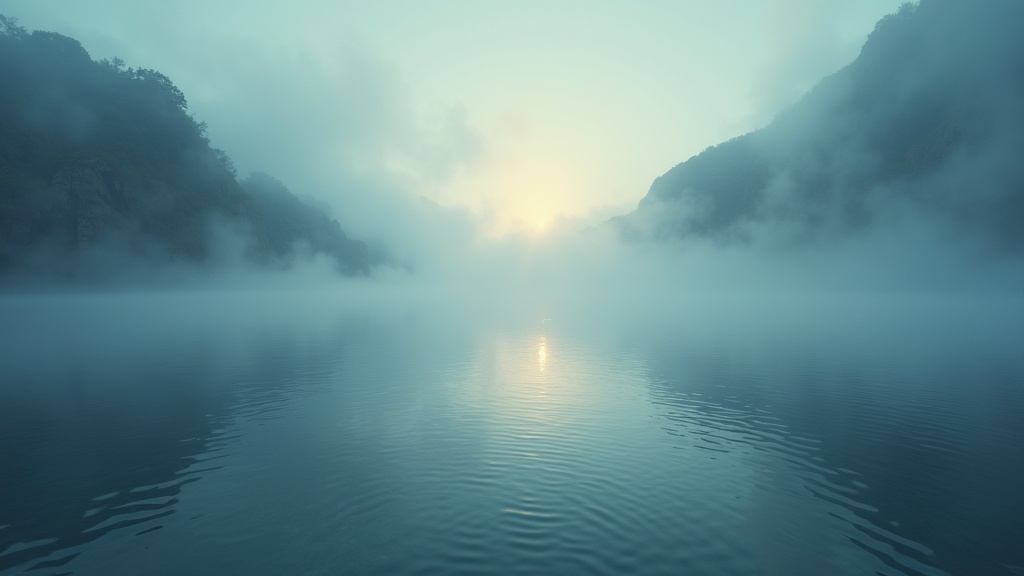Ancient texts from around the world often weave water and spirit together into their creation stories. These elements pop up in stories from Genesis all the way to the oldest Hindu chants and Egyptian legends. Comparing these stories can teach us a lot about how humans throughout history have tried to understand where we come from and what it means to exist.

Spirit and Water in the World’s Oldest Stories
The connection between spirit and water runs deep in more than just the book of Genesis. Many ancient cultures describe the beginning of everything as some kind of watery state, moved or touched by a spirit or breath. Here are a few standout examples I find really fascinating:
- Hebrew Bible (Genesis): The story kicks off with darkness over the surface of the deep, and the “spirit of God” hovering over the waters (Genesis 1:2). Water isn’t just a backdrop, it’s what’s there before anything else happens.
- Ancient Egyptian Texts: The Egyptian creation stories talk about the waters of Nun. This endless, chaotic water is pretty much where everything starts, until the first mound of land rises up out of it. Sometimes, the creator god is said to “speak” or breathe over this water to make things begin.
- Hindu Scriptures: The Rig Veda, one of Hinduism’s oldest collections, refers to a cosmic ocean that existed before the universe. The chants say a divine force moved over these primordial waters, leading to creation when the “one breathed, windless, by its own impulse.”
- Greek Myths: Old Greek tales mention Oceanus, a massive riverlike force that surrounds the world. The Orphic tradition also describes a formless, watery void, with Night and Wind (spiritlike figures) blending together to spark life.
What jumps out to me is how these stories pop up almost everywhere, and how water isn’t just a side note, but basically the source or container for everything to come.
Caterpillars essentially demonstrate this creation concept to us. A caterpillar turns into a nutrient-rich liquid soup during metamorphosis. Its own enzymes dissolve its body tissues into fluid. From this soup new body parts are made and an adult butterfly or moth emerges. View that soup as the waters and the deep from which a new world emerges.
Why Water and Spirit Show Up Together
You see water and spirit paired together for good reason. Water in these old stories usually stands for the formless, endless potential, the raw being that anything could come from. It’s dark, deep, and chaotic, but it’s also full of possibilities.
Spirit, on the other hand, is almost always described as a mover, a shaper, or an energy that kickstarts action. Sometimes it’s called “wind” or “breath.” Sometimes it’s a voice or a word. It takes that watery mass and gives it a push.
Symbolism of Water: The Beginning of Everything
Across the centuries, water almost always hints at mystery, depth, and what lies beneath the surface. It’s something you can’t fully grab onto, but you know it’s powerful. Without the waters, there’s nothing for the spirit to move, no place for change. So, pretty much every creation myth starts with water for this very reason. It’s the blank canvas, way before land, sky, or life as we know it.
Spirit: The Breath That Begins Creation
When ancient texts talk about spirit, they’re often describing an animating force that isn’t bound by shape or body. In Genesis, it hovers. In Hindu ideas, “spirit” is called “breath” (prana) that stirs the waters. In Egyptian myths, the creative word or will is almost like a breath or voice spreading over the water to call things into being. Spirit doesn’t just float around; it acts. It starts movement, draws boundaries, and allows new things to appear from what was once all formless.
Blending Stories: What They Teach About Origins
Setting these stories side by side, you get a clear picture: water and spirit are two sides of what humans see as the beginning of everything. People living in totally different eras and places saw the watery chaos and the breath of creation as deeply linked.
I see this as more than just coincidence. It speaks to a shared feeling about what it takes for life to appear.
It comes up in a few patterns:
- Always a Depth: The story starts with a deep, something endless, formless and undivided (often liquid).
- Always Movement: Spirit moves, hovers, breathes, or maybe even sings over that depth.
- Creation Follows: The union leads to the emergence of land, light, order, and life, just like wings, head, legs, life etc emerge from the caterpillar soup.
Why Humans Tell These Stories
Ancient storytellers probably drew on stuff they saw in the world around them. Water gives life but also hides what’s underneath. Wind moves things you can’t see. By linking these two, early thinkers put together a picture of how things move from chaos into order, and how nothing stays still for long. It reflects a kind of cycle too; rain falls, plants grow, rivers move, fog rises, a constant flow that mirrors the ongoing act of creation in the universe and in ourselves.
What Spirit and Water Symbolism Means in Real Life
So why does any of this matter today? I see the continued thread of water and spirit in old stories as a reminder of how humans keep searching for ways to explain where we come from. Whenever I read “the spirit hovered over the waters,” I picture the start of something in my own mind.
Whenever I notice ideas about breath, movement, or flow in everyday life, I’m reminded that these are things people thousands of years ago were paying attention to as well.
Getting back to our “inner waters” puts us in touch with the deep place inside us waiting for movement, for breath, for new beginnings. Sometimes, life can feel like a blank, shapeless sea, but just by pausing and sensing our own breath, we start to notice that spirit is always showing up, ready to move the waters again.
Things to Consider When Reading Spirit and Water in Ancient Texts
1. Different Cultures, Similar Patterns: Don’t worry if the words sound a little different from story to story. The pattern is what sticks; the mysterious waters, the stirring spirit, creation follows.
2. Language Shapes Meaning: In a lot of these stories, the word for “spirit” is the same as “wind” or “breath” (like ruach in Hebrew, pneuma in Greek, or prana in Sanskrit). When comparing, it helps to keep in mind that ancient languages used broad words for these ideas.
3. Universal and Personal: While these myths explain the universe, they’re also guides for personal growth. For anyone looking for a fresh start or clarity, the pairing of water and spirit becomes a tool for tuning into what’s possible in our own lives.
Common Questions About Spirit, Water, and Creation Myths
Question: Why do so many ancient stories use water and spirit in creation?
Answer: Water stands for mystery and raw potential, while spirit is the mover or life-giver. Pairing them is how things begin from nothing.
Question: What does Genesis say about water and spirit?
Answer: Genesis 1:2 describes the spirit of God moving over the formless waters before anything is created. That’s the start of everything, showing water as foundation and spirit as the energy that starts change.
Question: Are there other creation myths similar to Genesis?
Answer: Yes! Stories from Egypt, India, and Greece also put a watery state and a moving force or spirit at the center of creation.
If this resonates with you and you’d like to keep walking this path follow along. This is article 16 of a 300-part series exploring the Essence of Being, the meaning of existence, the Spirit of God and the journey back to Source. The Next article is: “Comparing Ancient Texts On Spirit And Water.” These articles prepare you for the deeper journey the book, ‘You Are That I Am‘ offers you.

